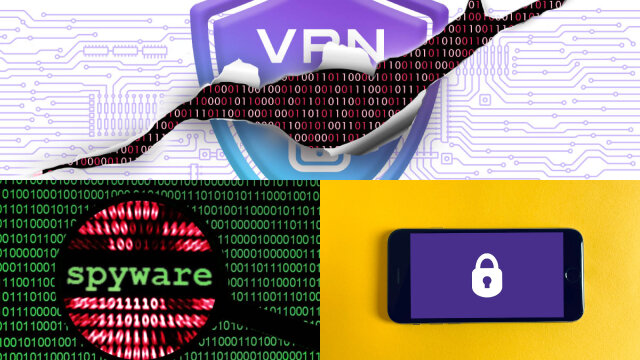Understanding Spyware and Its Objectives
Spyware is a type of malicious software that is designed to collect data from a user’s computer or device without their knowledge or consent. The objective of spyware is to gather sensitive information such as login credentials, browsing history, and personal data that can be used for fraudulent purposes.
Spyware can be installed on a device through various means, such as email attachments, software downloads, or by exploiting vulnerabilities in a device’s operating system. Once installed, spyware runs in the background, collecting data and transmitting it back to the attacker’s server.

The use of spyware is a serious threat to individual privacy and security. It can lead to identity theft, financial fraud, and other forms of cybercrime. To protect against spyware, it is important to use reputable anti-malware software and to be cautious when downloading software or opening email attachments. Regularly scanning your device for malware and keeping your software up to date can also help to prevent spyware infections.
Types of Spyware and Their Characteristics
Spyware is a type of malicious software that is designed to collect data from a user’s computer or device without their knowledge or consent. There are several different types of spyware, each with their own characteristics and objectives.
One common type of spyware is keyloggers, which record every keystroke a user makes on their computer or device, including login credentials and other sensitive information. Another type of spyware is adware, which displays unwanted advertisements and pop-ups on a user’s computer or device.
Other types of spyware include browser hijackers, which modify a user’s web browser settings to redirect them to unwanted websites, and trojan spyware, which disguises itself as a legitimate program in order to gain access to a user’s computer or device.
To protect against these types of spyware, it is important to use reputable anti-malware software and to be cautious when downloading software or opening email attachments. Regularly scanning your device for malware and keeping your software up to date can also help to prevent spyware infections.
Signs That Your Device May Be Infected with Spyware
Spyware is a type of malicious software that is designed to collect data from a user’s computer or device without their knowledge or consent. If your device is infected with spyware, there are several signs that may indicate that something is wrong.
One common sign of a spyware infection is a noticeable decrease in device performance, such as slower processing speeds and longer load times. Another sign is the appearance of unwanted pop-ups and advertisements on your device, even when you are not browsing the internet.

Other signs of a spyware infection include changes to your device’s settings, such as a different default search engine or homepage, and the appearance of new toolbars or browser extensions that you did not install.
If you suspect that your device may be infected with spyware, it is important to take action to remove it as soon as possible. This may involve running a malware scan using reputable anti-malware software and resetting your device to its default settings. Regularly scanning your device for malware and keeping your software up to date can also help to prevent spyware infections.
Who Can Be Attacked by Spyware?
Anyone who uses a computer or mobile device that is connected to the internet can be attacked by spyware. This includes individuals, businesses, and organizations of all sizes.
Hackers and cybercriminals can use spyware to steal sensitive information such as login credentials, financial data, and personal information from anyone who uses a device that is infected with spyware. They can also use spyware to monitor a user’s online activities and steal intellectual property.
In addition, businesses and organizations may be targeted by spyware attacks as a means of gaining access to proprietary information and trade secrets. This can result in financial losses, damage to reputation, and legal repercussions.
To protect against spyware attacks, it is important to use reputable anti-malware software and to be cautious when downloading software or opening email attachments. Regularly scanning your device for malware and keeping your software up to date can also help to prevent spyware infections. Additionally, businesses and organizations should have security protocols in place to protect against spyware and other types of cyber threats.
How Spyware Attacks Happen
Spyware attacks can happen in several ways. One common method is through phishing emails that appear to be from a legitimate source, such as a bank or social media website. These emails often contain a link or attachment that, when clicked or opened, downloads spyware onto the user’s device.
Another way spyware attacks can happen is through software downloads from untrusted websites. These downloads may include free software or games that contain spyware as a hidden component.

Spyware attacks can also occur through software vulnerabilities in a user’s operating system or web browser. Hackers can exploit these vulnerabilities to install spyware onto a user’s device without their knowledge or consent.
To protect against spyware attacks, it is important to use reputable anti-malware software and to be cautious when downloading software or opening email attachments. Regularly scanning your device for malware and keeping your software up to date can also help to prevent spyware infections. Additionally, it is important to be cautious when browsing the internet and to only download software from trusted sources.
The Risks Associated with Spyware
Spyware poses several risks to computer and mobile device users. One major risk is the theft of personal and sensitive information, such as login credentials, financial data, and personal identity information. This information can be used by cybercriminals for identity theft and fraud.
Spyware can also compromise a user’s device and make it vulnerable to other types of malware, such as viruses and ransomware. In addition, spyware can slow down a device’s performance and cause it to crash or freeze.
Businesses and organizations are also at risk from spyware attacks, which can result in the theft of proprietary information, financial losses, and damage to reputation.
To minimize the risks associated with spyware, it is important to use reputable anti-malware software and to be cautious when downloading software or opening email attachments. Regularly scanning your device for malware and keeping your software up to date can also help to prevent spyware infections. Additionally, businesses and organizations should have security protocols in place to protect against spyware and other types of cyber threats.
Preventing Spyware Infections
Preventing spyware infections requires a combination of caution and the use of specialized software. First, it is important to be careful when downloading software or opening email attachments. Only download software from trusted sources and avoid clicking on links or opening attachments from unknown sources.
Second, use reputable anti-malware software and keep it up to date. This will help to detect and remove spyware before it can cause damage.

Third, keep your operating system and software up to date with the latest security updates. This will help to close any vulnerabilities that could be exploited by spyware and other types of malware.
Finally, be cautious when browsing the internet and only visit reputable websites. Some websites may contain hidden spyware that can infect your device without your knowledge.
By following these tips, you can help to prevent spyware infections and protect your personal and sensitive information from cybercriminals.
How to Remove Spyware from Your Device
If you suspect that your device has been infected with spyware, there are steps you can take to remove it. The first step is to run a scan using reputable anti-malware software. This will help to detect and remove any spyware that may be present on your device.
If the anti-malware software is unable to remove the spyware, you may need to take additional steps such as booting your device into safe mode or using a specialized spyware removal tool.
It is also important to remove any suspicious software or browser extensions that may be associated with the spyware. This can be done through the device’s control panel or settings menu.
After removing the spyware, it is important to change any passwords or login credentials that may have been compromised. Additionally, it is recommended to run regular scans and keep your anti-malware software up to date to prevent future infections.